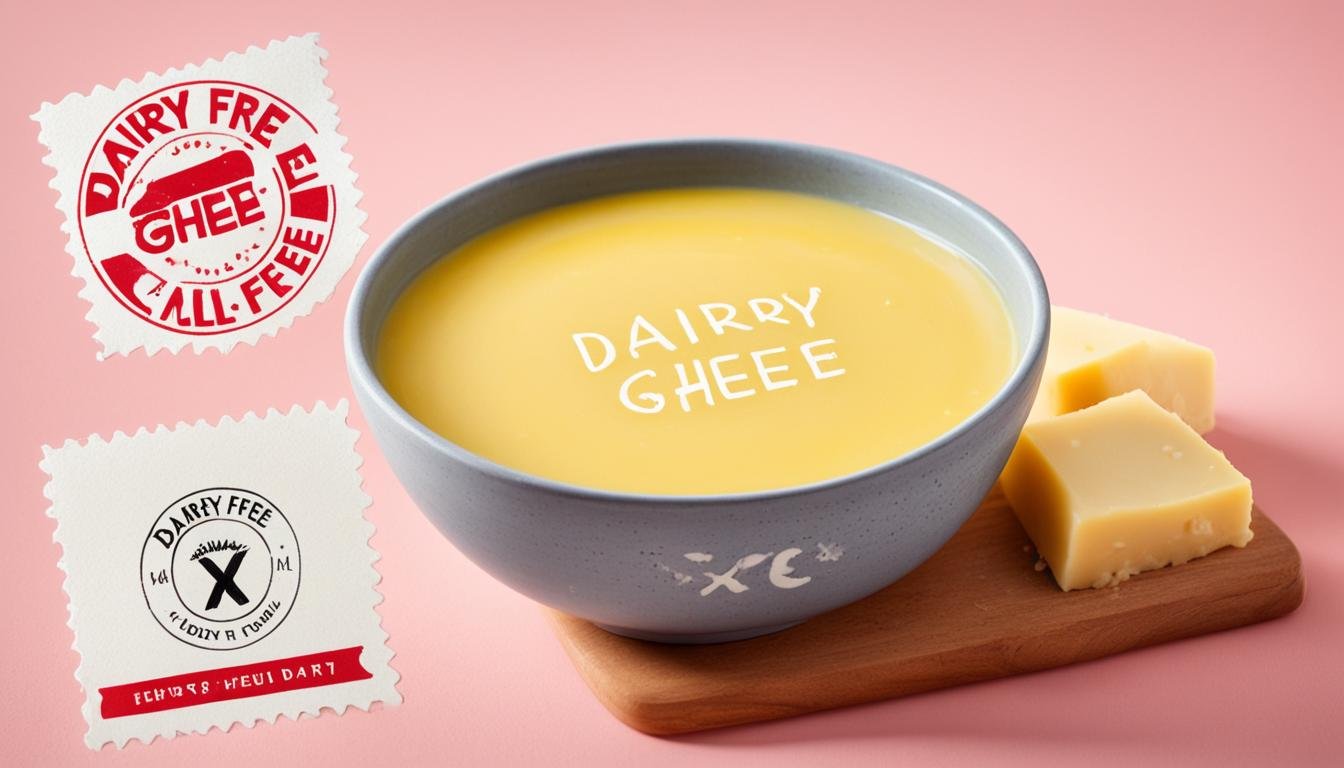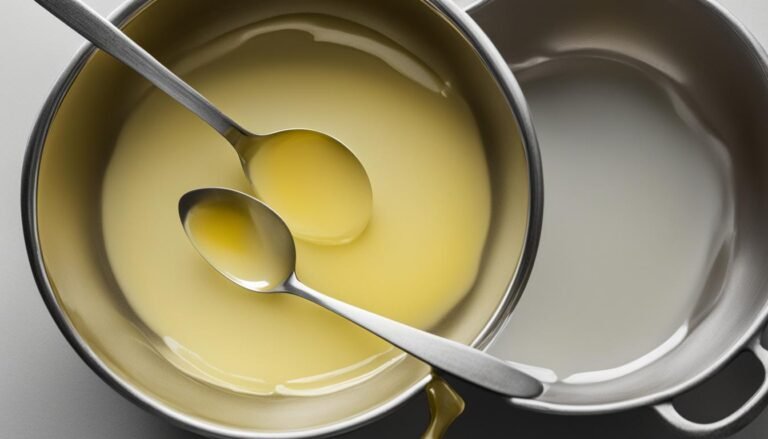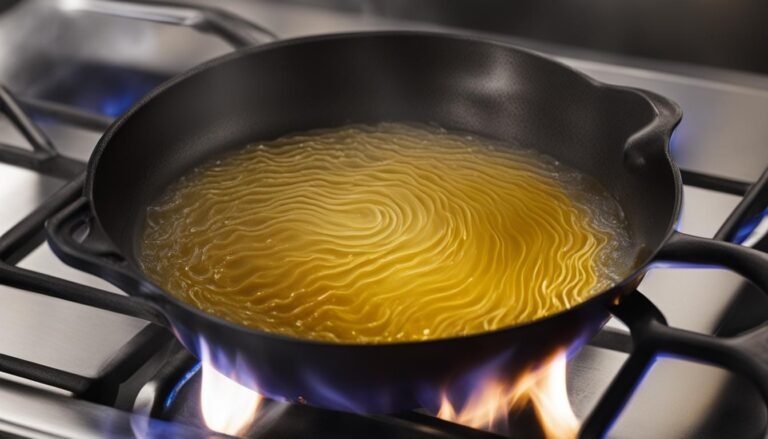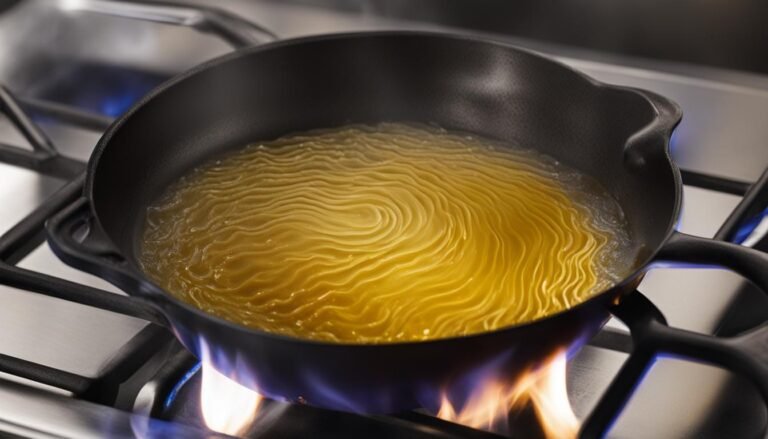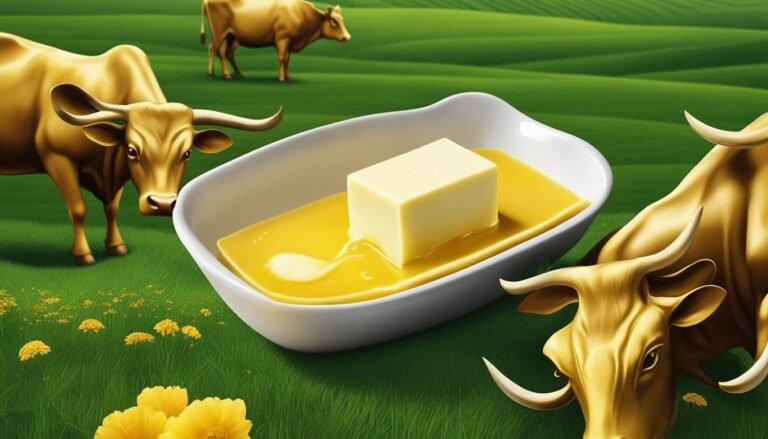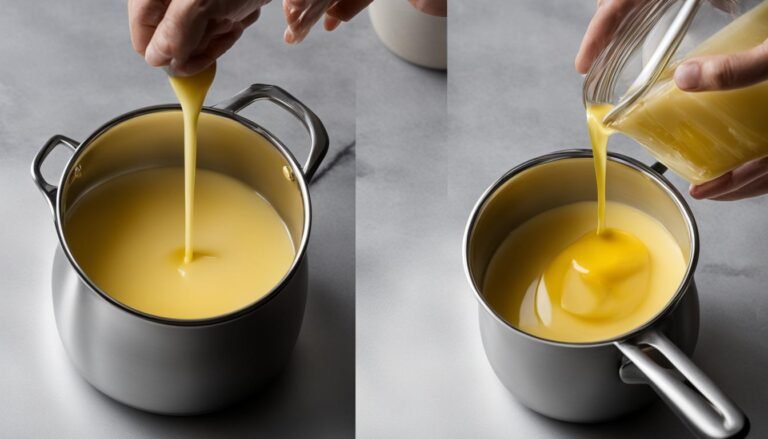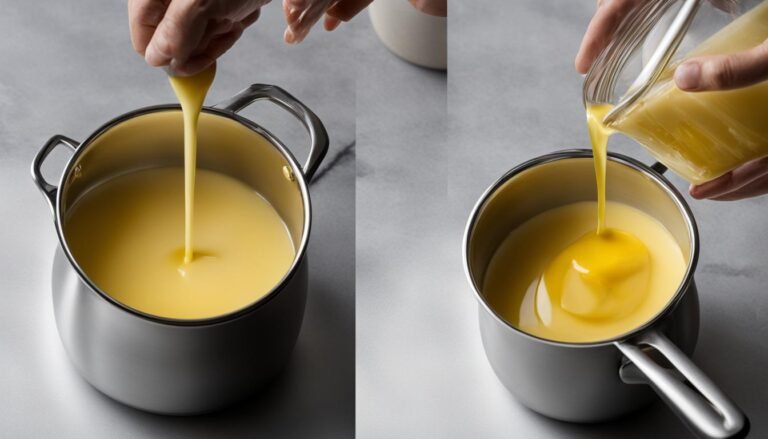Is Ghee Dairy Free?
Ghee, a clarified butter commonly used in Indian and East Asian cooking, is often questioned for its dairy content. While it is not entirely dairy-free, the process of making ghee removes most of the dairy components, making it a suitable option for those who are lactose intolerant. However, it’s important to note that ghee still contains trace amounts of lactose and casein, which may affect individuals with severe allergies or sensitivities. In this article, we will examine the process of making ghee, its dairy content, and compare it to traditional butter to determine if ghee can be considered as a dairy-free option.
Key Takeaways:
- Ghee is not entirely dairy-free but has most of the dairy components removed during the clarification process.
- Ghee contains trace amounts of lactose and casein, which may affect individuals with severe allergies or sensitivities.
- Comparing ghee to traditional butter can help determine its suitability as a dairy-free option.
Understanding Ghee and Its Dairy Content
To truly understand the dairy content of ghee, it’s important to explore the process of making it. Ghee is produced by heating butter and removing any remaining water and caramelized milk solids. This meticulous process effectively separates the butterfat from the milk solids, resulting in a more concentrated fat.
During the ghee-making process, most dairy components are eliminated, making it a viable option for individuals with lactose intolerance. Although trace amounts of lactose and casein may still be present in ghee, their levels are significantly lower compared to traditional butter.
The Process of Making Ghee Removes Most Dairy Components
Ghee is created through a simple yet precise process. Here’s a closer look at how ghee is made:
- Butter is heated in a pan until it melts completely.
- As the butter is heated, it starts to separate into three distinct layers: the top foam layer, the clarified butterfat layer in the middle, and the milk solids at the bottom.
- The milk solids are caramelized and left to settle at the bottom, while the clear butterfat is carefully skimmed off.
- The process of skimming and clarifying the butterfat is repeated until the desired level of purity is achieved.
Through these steps, ghee is created with a much higher fat concentration, resulting in the removal of most dairy components.
An Examination of Lactose and Casein in Ghee
While ghee is not entirely free of lactose and casein, its presence is minimal. Lactose is the sugar naturally found in milk, while casein is a protein. Both lactose and casein can cause issues for individuals with lactose intolerance or dairy sensitivities.
Compared to traditional butter, ghee contains significantly lower amounts of lactose and casein. The heating process used during ghee production effectively reduces these components, making it a favorable option for those with dairy sensitivities.
Comparing Ghee with Traditional Butter
When it comes to the dairy content, ghee and traditional butter have notable differences:
| Aspect | Ghee | Traditional Butter |
|---|---|---|
| Lactose Content | The minimal presence of lactose | Significant lactose content |
| Casein Content | Minimal casein presence | Higher levels of casein |
| Fat Concentration | Higher fat concentration | Lower fat concentration |
Comparing the two, ghee offers a more favorable option for those seeking a dairy-free alternative. Its minimal dairy components, including lactose and casein, make it suitable for individuals with lactose intolerance or dairy sensitivities.
Is Ghee Dairy Free and Its Implications for Lactose Intolerance
Individuals with lactose intolerance often face discomfort and digestive issues when consuming dairy products. While ghee is not entirely dairy-free, its low levels of lactose and casein make it a potential alternative for those with lactose intolerance. The minimal presence of these components in ghee may be better tolerated by some individuals, providing them with an option to enjoy the flavor and benefits of butter without the undesirable side effects.
Ghee, a clarified butter commonly used in Indian and East Asian cooking, has gained popularity in recent years as a dairy-free option for lactose-intolerant individuals. Although ghee is made from butter, the process of making ghee removes most of the dairy components, leaving behind primarily pure butterfat.
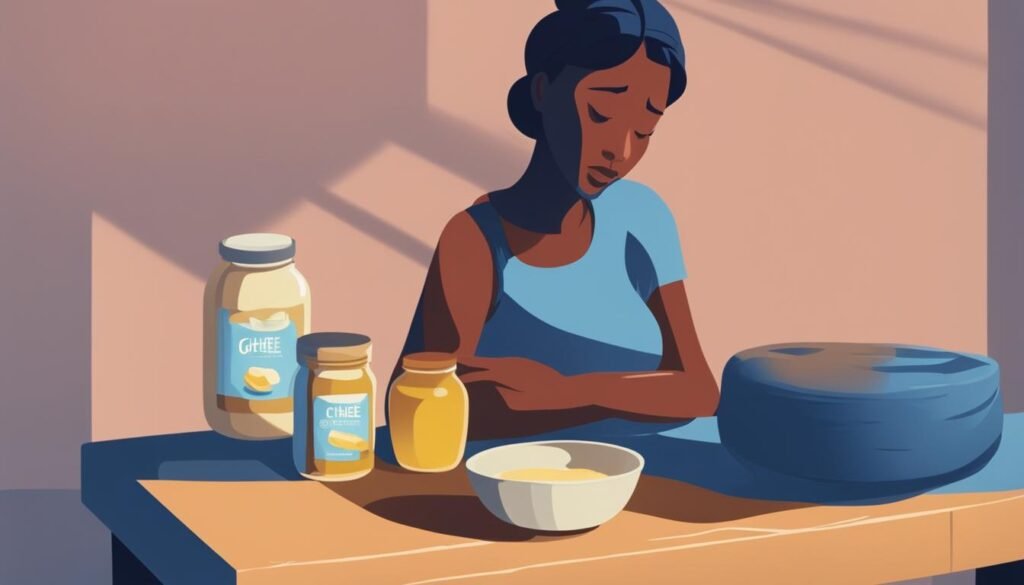
Many individuals with lactose intolerance find that they can consume ghee without experiencing the uncomfortable symptoms associated with dairy consumption. The minimal presence of lactose and casein in ghee makes it more digestible for those with lactose intolerance, providing them with an alternative to traditional butter.
It’s important to note that while ghee can be a suitable option for individuals with lactose intolerance, it may not be suitable for those with severe dairy allergies or sensitivities. It is always recommended to consult with a healthcare professional before incorporating ghee into your diet.
Overall, ghee offers a dairy-free alternative for individuals with lactose intolerance, allowing them to enjoy the richness and taste of butter without the undesirable side effects. The implications of ghee for lactose intolerance highlight its potential as a viable choice for a dairy-free diet.
| Ghee | Traditional Butter |
|---|---|
| Low levels of lactose and casein | Higher levels of lactose and casein |
| Butterfat remains after dairy components are removed | Contains all dairy components |
| May be better tolerated by individuals with lactose intolerance | May cause discomfort for individuals with lactose intolerance |
Conclusion
In conclusion, ghee can be a valuable addition to a dairy-free diet, especially for individuals with lactose intolerance. While ghee is not entirely dairy-free, its minimal dairy content makes it a viable option for those seeking a butter alternative. Despite its origins in dairy, ghee is favored by many due to its unique flavor, higher smoke point, and potential health benefits.
The process of making ghee removes most of the dairy components, allowing individuals with lactose sensitivity to enjoy ghee without digestive issues. However, individuals with severe dairy allergies should exercise caution and consult with a healthcare professional before incorporating ghee into their diet.
Overall, ghee provides a suitable alternative for individuals looking to eliminate dairy from their diet without compromising the richness and taste of butter. Its positioning in a dairy-free diet is supported by its ability to provide flavor, higher smoke point for cooking, and potential health benefits. Exploring ghee as a dairy-free option empowers individuals with lactose sensitivity to make informed choices for their dietary needs.
FAQ
Is ghee dairy free?
Ghee is not entirely dairy-free since it still contains trace amounts of lactose and casein. However, the process of making ghee removes most of the dairy components, making it suitable for individuals with lactose intolerance.
What is the dairy content of ghee?
The process of making ghee removes most of the dairy components, but trace amounts of lactose and casein may still be present. However, these levels are significantly lower than what is found in traditional butter.
How does ghee compare with traditional butter in terms of dairy content?
Ghee has lower levels of lactose and casein compared to traditional butter due to the process of making ghee, which removes most of the dairy components.
Can ghee be considered a dairy-free option for individuals with lactose intolerance?
While ghee is not entirely dairy-free, its low levels of lactose and casein make it a potential alternative for individuals with lactose intolerance. The minimal presence of these components in ghee may be better tolerated by some individuals.
Is ghee suitable for a dairy-free diet?
Ghee can be a suitable choice for individuals looking for a dairy-free alternative since it has minimal dairy content. However, those with severe dairy allergies should exercise caution and consult with a healthcare professional before incorporating ghee into their diet.

